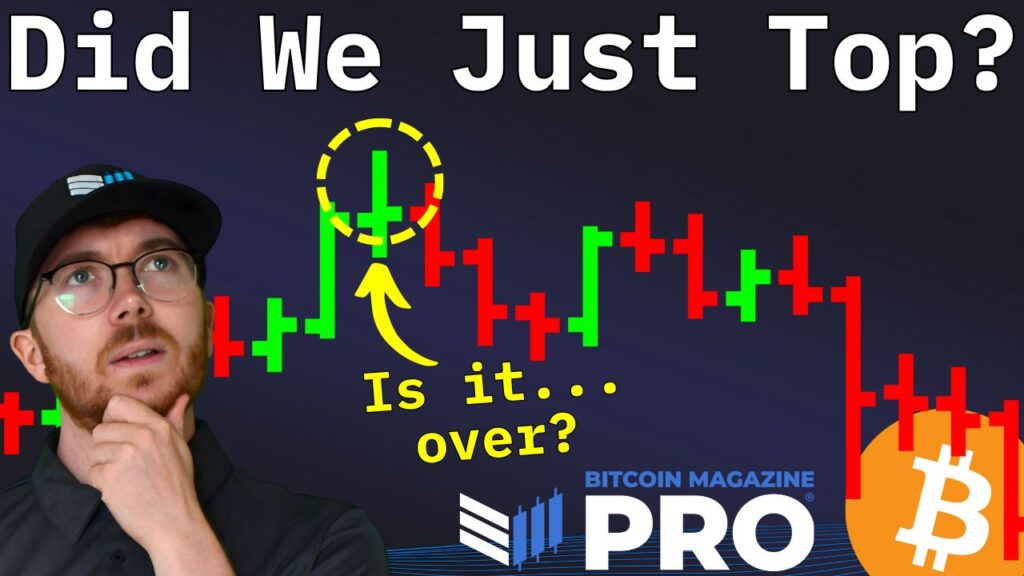
Hey there, fellow crypto enthusiasts! The recent nosedive in the bitcoin price has certainly stirred up quite a storm in the digital currency realm. With over $19 billion worth of positions liquidated and a whopping 1.6 million traders bowing out, the question on everyone's mind is whether the Bitcoin bull market is waving the white flag.
Bitcoin Price Analysis: Is the Bull Market Saga Over?
Despite the brutal crash, all hope is not lost for the bull market. Bitcoin has been on this rollercoaster ride for over 1,050 days now, mirroring the timelines of the 2017 and 2021 peaks. However, the current scenario is a different ball game altogether. Instead of just following its halving schedule, Bitcoin's performance seems to be dancing to the tunes of Global Liquidity and the traditional business cycle.
Insights into Market Behavior
The recent plateau in Global M2 growth might seem like a red flag, but hold your horses! Anticipated rate cuts for late 2025 are in the pipeline. History shows that declining rates usually trigger Bitcoin's most robust upticks, fueled by accessible credit that reignites investors' risk appetite.
Bitcoin Price Rollercoaster: The Derivatives Market Shake-Up
The recent meltdown wiped out $19 billion in leveraged positions faster than you can say "crypto." The cascading liquidations triggered a domino effect, but it wasn't a result of widespread spot selling. The real culprit here was excessive leverage. The funding rates are now in the doldrums, echoing the gloomiest vibes since October 2023 when Bitcoin was trading around $28,000. However, history whispers that such dark times often mark significant turning points and the dawn of vigorous recoveries.
Decoding the Derivatives Debacle
As leverage took the spotlight, on-chain metrics told a different tale. Long-term holders stood their ground, holding onto their assets. Metrics like coin days destroyed remained tranquil, indicating stability. The spent output profit ratio took a dip, revealing a common mid-cycle shakeout pattern where recent buyers accepted losses. The supply-adjusted coin days destroyed metric continued its downward journey, a testament to the unwavering faith of long-term holders.
Bitcoin Price: Sentiment vs. Network Activity
Sentiment hit rock bottom, plunging into the abyss of extreme fear. Yet, history whispers tales of strong rebounds post such plummeting lows. The active address sentiment indicator echoed the sentiment, highlighting a deviation between price and network activity. Every similar downturn in the cycle heralded discounted buying opportunities. Signals like the NVT indicator and short-term holder realized price sang the same tune: Bitcoin's current value is below the average new entrants' cost, a sweet spot for accumulation during bullish phases.

Unveiling Sentiment and Activity Disparities
While the market sentiment took a hit, the macroeconomic landscape looms large. Bitcoin's fate seems intertwined with equity markets. If stocks hold their ground, Bitcoin's revival might be on the cards alongside other risk assets. The upward trajectory of Gold and Silver hints at the enduring charm of hard assets. Bitcoin's dance with these assets will decide its fate as digital gold or a mere equity proxy.
Bitcoin Price: The Verdict
Yes, the recent shake-up was like a tornado for overleveraged traders, but it was a breath of fresh air for the market's health. It swept away the excesses, recalibrated funding rates, and set the stage for the next upward swing. As ETFs and corporations quietly accumulate, and the supply dynamics stay taut, the future seems promising.
Wrapping Up:
All in all, the recent turbulence in the Bitcoin realm might have rattled a few cages, but it's poised to pave the way for a brighter future. So, buckle up, stay informed, and get ready to ride the waves of the ever-exciting crypto sphere!
Frequently Asked Questions
What are the pros & cons of a Gold IRA?
The main advantage of an Individual Retirement Account (IRA) over a regular savings account is that you don't have to pay taxes on any interest earned. This makes an IRA great for people who want to save money but don't want to pay tax on the interest they earn. This type of investment has its downsides.
You may lose all your accumulated savings if you take too much out of your IRA. Also, the IRS may not allow you to make withdrawals from your IRA until you're 59 1/2 years old. You will likely have to pay a penalty fee if you withdraw funds from an IRA.
The downside is that managing your IRA requires fees. Many banks charge between 0.5% and 2.0% per year. Others charge management fees that range from $10 to $50 per month.
If you prefer to keep your money outside a bank, you'll need to purchase insurance. Most insurers require you to own a minimum amount of gold before making a claim. You might be required to buy insurance that covers losses up to $500,000.
If you choose to go with a gold IRA, you'll need to determine how much gold you want to use. Some providers limit the number of ounces of gold that you can own. Others let you choose your weight.
You will also have to decide whether to purchase futures or physical gold. Futures contracts for gold are less expensive than physical gold. Futures contracts allow you to buy gold with more flexibility. They let you set up a contract that has a specific expiration.
You'll also need to decide what kind of insurance coverage you want. The standard policy doesn't include theft protection or loss due to fire, flood, or earthquake. The policy does not cover natural disasters. If you live in a high-risk area, you may want to add additional coverage.
Insurance is not enough. You also need to think about the cost of gold storage. Storage costs are not covered by insurance. For safekeeping, banks typically charge $25-40 per month.
If you decide to open a gold IRA, you must first contact a qualified custodian. A custodian helps you keep track of your investments, and ensures compliance with federal regulations. Custodians are not allowed to sell your assets. Instead, they must maintain them for as long a time as you request.
After you have decided on the type of IRA that best suits you, you will need to complete paperwork detailing your goals. Information about your investments such as stocks and bonds, mutual fund, or real property should be included in your plan. You should also specify how much you want to invest each month.
Once you have completed the forms, you will need to mail them to your provider with a check and a small deposit. After reviewing your application, the company will send you a confirmation mail.
When opening a gold IRA, you should consider using a financial planner. Financial planners are experts in investing and will help you decide which type of IRA works best for your situation. They can help you find cheaper insurance options to lower your costs.
Is the government allowed to take your gold
Your gold is yours and the government cannot take it. You worked hard to earn it. It belongs to you. But, this rule is not universal. For example, if you were convicted of a crime involving fraud against the federal government, you can lose your gold. Also, if you owe taxes to the IRS, you can lose your precious metals. You can keep your gold even if your taxes are not paid.
What is the tax on gold in Roth IRAs?
Investment accounts are subject to tax based only on their current value and not the amount you originally paid. Any gains made by you after investing $1,000 in a stock or mutual fund are subject to tax.
However, if the money is deposited into a traditional IRA/401(k), the tax on the withdrawal of the money is not applicable. Capital gains and dividends earn you no tax. This applies only to investments made for longer than one-year.
These rules vary from one state to another. Maryland's rules require that withdrawals be taken within 60 days after you turn 59 1/2. In Massachusetts, you can wait until April 1st. New York has a maximum age limit of 70 1/2. To avoid penalty fees, it is important to plan and take distributions in time to pay all your retirement savings.
How much should precious metals be included in your portfolio?
To answer this question we need to first define precious metals. Precious elements are those elements which have a high price relative to other commodities. They are therefore very attractive for investment and trading. Gold is by far the most common precious metal traded today.
However, many other types of precious metals exist, including silver and platinum. The price of gold fluctuates, but it generally remains stable during times of economic turmoil. It is not affected by inflation or deflation.
In general, all precious metals have a tendency to go up with the market. However, the prices of precious metals do not always move in sync with one another. For example, when the economy is doing poorly, the price of gold typically rises while the prices of other precious metals tend to fall. Investors expect lower interest rate, making bonds less appealing investments.
In contrast, when the economy is strong, the opposite effect occurs. Investors choose safe assets such Treasury Bonds over precious metals. They are more rare, so they become more expensive and less valuable.
Therefore, to maximize profits from investing in precious metals, you must diversify across multiple precious metals. You should also diversify because precious metal prices can fluctuate and it is better to invest in multiple types of precious metals than in one.
Statistics
- Indeed, several financial advisers interviewed for this article suggest you invest 5 to 15 percent of your portfolio in gold, just in case. (aarp.org)
- If you accidentally make an improper transaction, the IRS will disallow it and count it as a withdrawal, so you would owe income tax on the item's value and, if you are younger than 59 ½, an additional 10% early withdrawal penalty. (forbes.com)
- You can only purchase gold bars at least 99.5% purity. (forbes.com)
- Contribution limits$6,000 (49 and under) $7,000 (50 and up)$6,000 (49 and under) $7,000 (50 and up)$58,000 or 25% of your annual compensation (whichever is smaller) (lendedu.com)
- This is a 15% margin that has shown no stable direction of growth but fluctuates seemingly at random. (smartasset.com)












